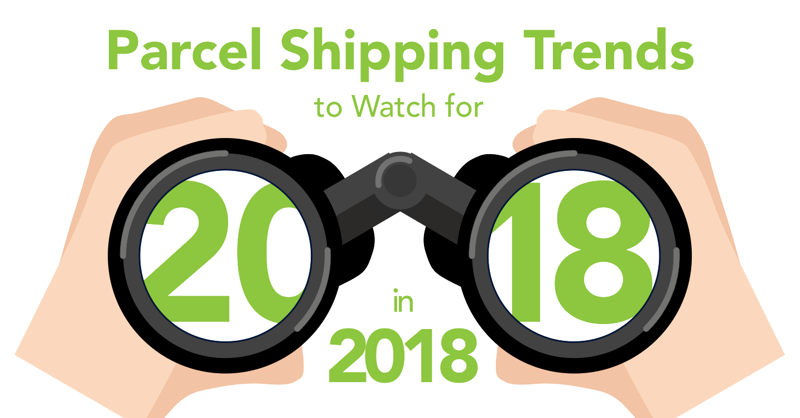If necessity was the mother of invention, desperation was the father. And desperation is currently driving a lot of change within the eCommerce space as businesses struggle to keep up with the ever-increasing demand for faster and cheaper delivery. Heading into 2018, the focus for most online retailers is to find and implement ways to remain competitive against their biggest threat – Amazon. The successful ones will do so by taking advantage of new market opportunities and delivery technologies that help protect already thin margins.
Trend #1: Omni-channel Shipping Will Drive More Sales and Operating Efficiencies
eCommerce has completely changed the retail supply chain, forcing traditional brick and mortar stores to seek ways to use their various points of operation to drive more sales and operating efficiencies. This can include using supplier location, stores or offices as “fulfillment centers,” putting inventory close to customers, and cutting down on delivery time.
In 2018, customers will continue to press for a seamless buying experience – which can include “showrooming” in a store and buying online (or vice versa). Retailers will be investing further in omni-channel solutions that leverage synergies to increase their sales and market share. Operationally, omni-channel shipping creates a lot of challenges that retailers will have to figure out.
There are rumors that Amazon will buy Target. If this comes to pass, it will put even more pressure on eCommerce retailers to find ways to compete.
Trend #2: New Delivery Models Will Expand Consumer Choices
Last-mile delivery will continue to drive demand for parcel and LTL carriers in 2018. Retailers are desperate to keep up with, and exceed, the service levels Amazon provides for free. New delivery models – like crowdsourcing, pick up lockers, and in-store pickup services - are all on the table as options for consumers.
The technology that supports these new modes of delivery, and the operations behind them, are still at their nascent stage, but the major carriers will continue to promote that as they allow for more cost-effective delivery aggregation as compared to residential delivery. Look for a few of these services to gain more momentum in 2018.
Trend #3: Predictive Analytics Will Reduce Costs
Data-driven logistics will transform the future of the industry. Improvements in the way businesses collect and analyze data will be key to streamlining processes, lowering inventory, shortening delivery times, and reducing transportation costs. In 2018, more companies will move from descriptive analytics (“what did I do”) to predictive analytics (“what should I do”).
Look for companies to use geography-based analysis to predict demand of certain products in specific areas and ship orders ahead of time. It will be possible to make more accurate predictions about actual delivery times based on historical data, instead of relying on published delivery times.
Trend #4: Cartonization Will Reduce Unexpected Dim Fees
With shipping costs so important to margin protection for online retailers, how orders are packaged will be a focus in 2018. This is because carriers are placing greater emphasis on shipment size in an effort to make the most of vehicle capacity. Increasing businesses will need to control packing processes in a way that takes into account transportation costs. More shippers will use cartonization technology to make more accurate shipping cost estimates in purchasing, order entry, and shopping carts while enforcing cost-effective decisions in fulfillment.
Trend #5: Parcel TMS Will Extend the Reach of Point Shipping Systems
Expect more companies to implement enterprise-class parcel TMS systems in 2018. With shipping costs increasing at twice the rate of inflation, the need to control cost-effective delivery services will make businesses take a second look at using carrier-provided shipping systems or even multi-carrier shipping systems. These point solutions will increasingly be inadequate to service the need to control transportation processes and decision-making across the extended enterprise.
Trend #6: Blockchain Will Open Up the Market to New Delivery Services
Blockchain started to gain traction within logistics in 2017 and its practical use will only strengthen in 2018. As stated in our recent article “5 Reasons Blockchain Will Transform the Parcel Shipping Industry,” the security and transparency offered by blockchain will be a competitive advantage within the supply chain of those companies that use it. Security, product authenticity, and transaction speed are all advantages companies are looking to gain from blockchain technology.
Few industries have been affected by the growth of eCommerce like parcel transportation. It is an exciting time, and there is no doubt that “old-school” approaches to managing parcel carriers will be transformed as more businesses look for technology to manage the cost of free shipping while improving customer delivery experience.
